Trà Sữa Trân Châu: Basic Information
Pronunciation
Alternative Name(s)
Drink Type
Mealtime
Popular Trà Sữa Trân Châu Variations
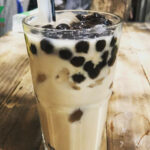
Trà Sữa Trân Châu Đen

Trà Sữa Trân Châu Đường Đen

Trà Sữa Trân Châu Trắng
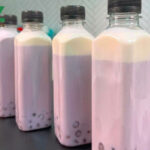
Trà Sữa Trân Châu Khoai Môn

Trà Sữa Trân Châu Matcha

Hồng Trà Sữa Trân Châu
Trà Sữa Trân Châu: Ingredients and Preparation
Main Ingredients
Main Preparing Method
Preparation Process
Trà Sữa Trân Châu: A Deep Dive
Cultural Significance
Taste
Texture
Aroma
Color
Serving Style
Serving Temperature
Accompaniment
Occasions
Calories
Popularity
Popular Similar Drinks
- Sinh Tố
- Milkshake
Popular Dining Area
Trà sữa trân châu is a Vietnamese fusion version of Taiwanese bubble tea combining brewed tea with milk, tapioca balls, and various toppings. Commonly, these tapioca balls are small and chewy, often enjoyed by using a large straw to suck up these balls.
In addition to the classic milk and green tea combination, trà sữa trân châu is also available in a black milk tea variation. When shaken, the tea offers a light foam over the surface, while the tapioca pearls often sink to the bottom.
Bubble tea was introduced to Vietnam in 2000 and quickly became a favorite among the country’s youth. Nowadays, there are all sorts of trà sữa trân châu in Vietnam, even on the streets, with toppings and various elements that customize the flavors.
Trà sữa trân châu offers various adaptations to explore along with numerous types of tapioca pearls used. Also, you shouldn’t miss the techniques to whip up a perfect cup of trà sữa trân châu for serving with various toppings.
Then, let’s uncover the positive and negative aspects of enjoying trà sữa trân châu before figuring out all the usual inquiries relating to the drink. Plus, I’ll also provide you with some drinks that share the same concept as trà sữa trân châu.
Key Points
Trà Sữa Trân Châu Images
What Are the Variants of Trà Sữa Trân Châu?
Trà sữa trân châu comes in numerous versions in Vietnam. However, I’ll keep it simple by introducing you to 7 of the popular trà sữa trân châu versions in Vietnam:
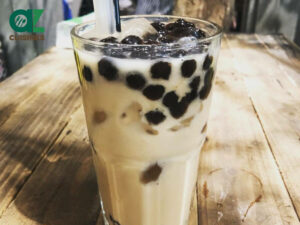
Trà Sữa Trân Châu Đen
A classic bubble tea with black tapioca pearls
Typically served with a strong tea base and milk.
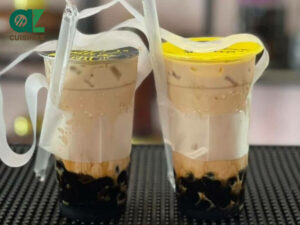
Trà Sữa Trân Châu Đường Đen
Bubble tea made with brown sugar syrup, giving a richer, caramel-like sweetness
Often made with black tapioca pearls
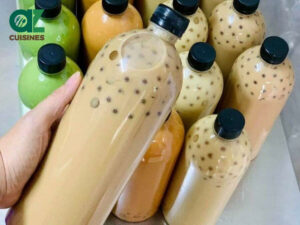
Trà Sữa Trân Châu Trắng
A variation featuring white tapioca pearls
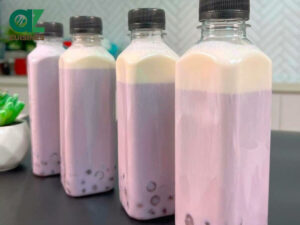
Trà Sữa Trân Châu Khoai Môn
Bubble tea flavored with taro
Has a distinctive purple color
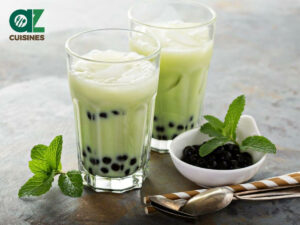
Trà Sữa Trân Châu Matcha
Incorporates matcha (green tea powder)
Provides a vibrant green color and a unique, earthy tea flavor
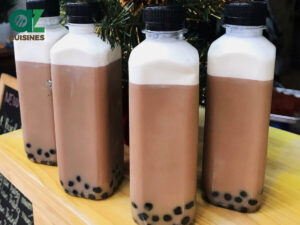
Hồng Trà Sữa Trân Châu
Made with red tea (black tea)
Complemented by milk and pearls
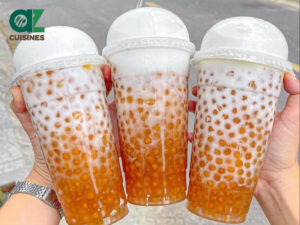
Trà Sữa Trân Châu Hoàng Kim
Made with golden hue tapioca pearls
Don’t forget, the tapioca pearls are a crucial part that defines Vietnamese boba tea. Therefore, you should know that there are many types of pearls used for making trà sữa trân châu.
What Are the Different Versions of Tapioca Pearls for Making Trà Sữa Trân Châu?
Trà sữa trân châu is only one side of the story as the many variants of tapioca pearls also provide a different take to the milk tea mix:
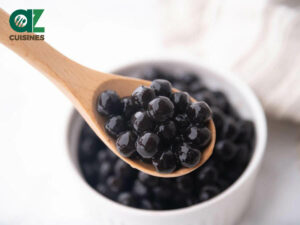
Trân Châu Đen
Classic black tapioca pearls, chewy and often sweetened
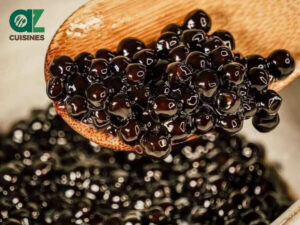
Trân Châu Đường Đen
Tapioca pearls sweetened with brown sugar for a caramel-like flavor.
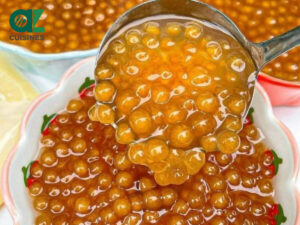
Trân Châu Hoàng Kim
Golden tapioca pearls
Has a jelly-like texture
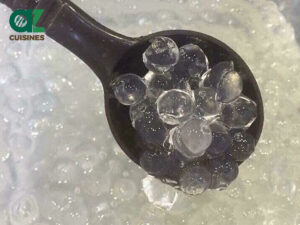
Trân Châu Trắng
White tapioca pearls
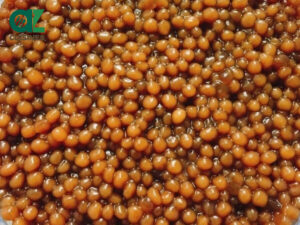
Trân Châu Cafe
Coffee-flavored tapioca pearls
Adding a distinct coffee taste
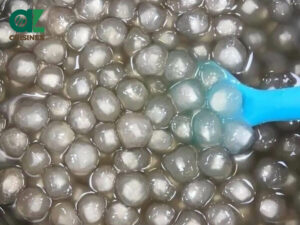
Trân Châu Dừa
Coconut-flavored tapioca pearls
The pearls have a piece of coconut meat in the middle

Trân Châu Hoa Đậu Biếc
Tapioca pearls infused with butterfly pea flower
Known for their vibrant blue color
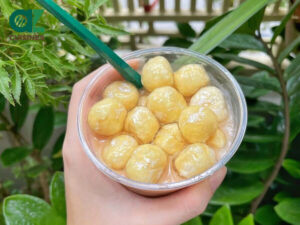
Trân Châu Phô Mai
Tapioca pearls with cheese in the middle
Offering a creamy and savory twist
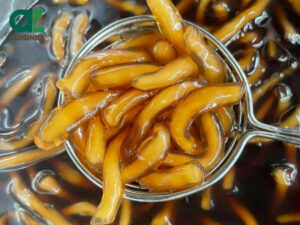
Trân Châu Sợi
Thin, noodle-like tapioca strands
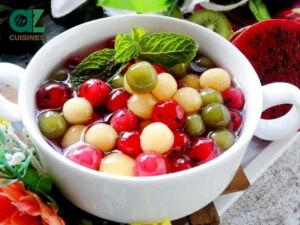
Trân Châu Trái Cây
Fruit-flavored tapioca pearls
Available in various fruit flavors
Remember, these pearls are a great way to customize your drink. For that, it’s crucial for you to know the process of producing trà sữa trân châu.
How to Make Trà Sữa Trân Châu?
To make trà sữa trân châu, mixing the milk and tea mixture is a crucial step along with making the tapioca pearls. Therefore, you should check out the 5 simple steps of whipping up a glass of trà sữa trân châu:
Step 1: Pearl Preparation
Boil water, cook tapioca pearls until they float, simmer as per instructions, then let sit, drain, and rinse.
Step 2: Tea Brewing
Brew tea (black, green, oolong, etc.) stronger than usual, cool to room temperature or chill.
Step 3: Milk Mixture
Mix milk or milk alternatives with sweetener (sugar, condensed milk, honey) to taste.
Step 4: Assembly
Add tapioca pearls to a glass, and pour cooled tea over them.
Step 5: Combining
Add sweetened milk mixture to tea, and stir to combine.
Step 6: Serving
Add ice for a chilled drink, and serve with a wide straw.
Aside from the steps of making trà sữa trân châu, A great way to add an extra layer of flavor and texture is through various toppings.
What Toppings Are Served with Trà Sữa Trân Châu?
Trà sữa trân châu is served with a variety of toppings to enhance its flavor and texture. Here are 4 popular options:
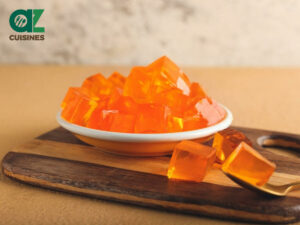
Fruit jellies
Cut into small cubes, these jellies come in various fruit flavors like mango, lychee, and strawberry.
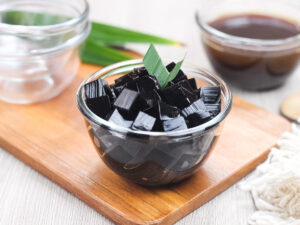
Grass jelly
A slightly sweet, herbal jelly that adds a refreshing element to the drink.
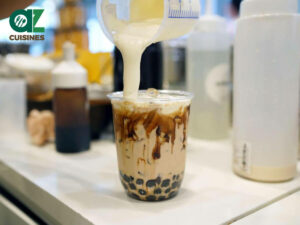
Cheese foam
A creamy, slightly salty topping that floats on top of the tea, adding a rich texture.
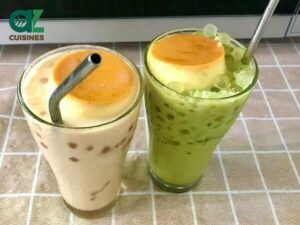
Flan
Adds a creamy texture and a caramel flavor to the drink.
To enjoy the diverse range of toppings available for trà sữa trân châu worry-free, it’s also important to consider the beverage’s benefits and drawbacks.
Pros and Cons of Drinking Trà Sữa Trân Châu
Enjoying trà sữa trân châu is often a comforting time for youngsters in Vietnam. Therefore, you should be well-informed about the good and bad features of having trà sữa trân châu:
Pros
Cons
Don’t just stop at knowing about the pros and cons of consuming trà sữa trân châu since there are many concerns revolving around this drink to uncover.



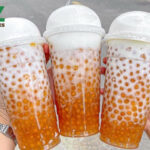
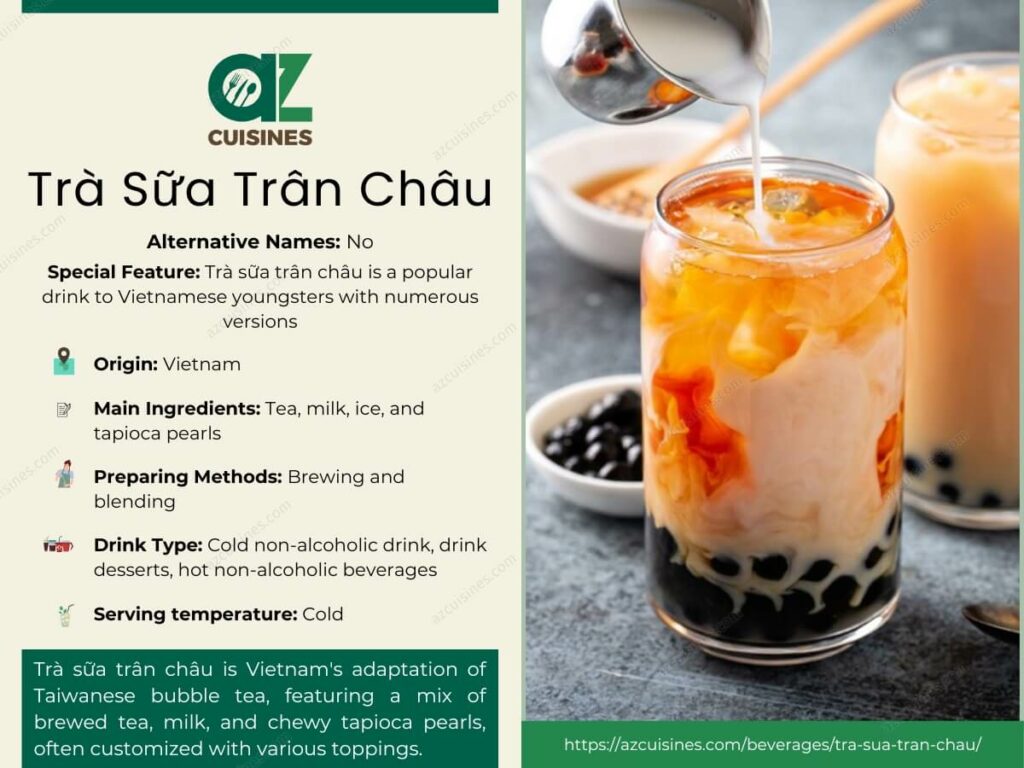
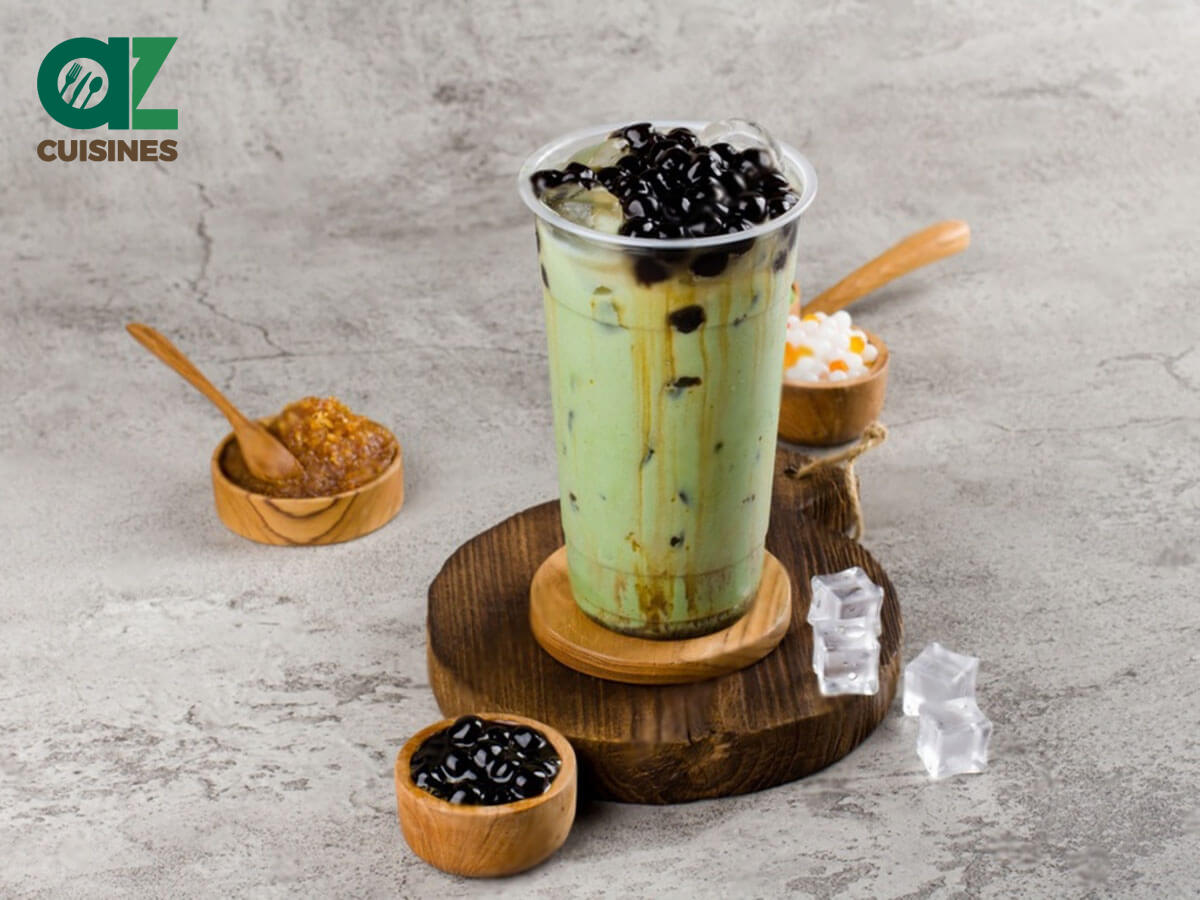
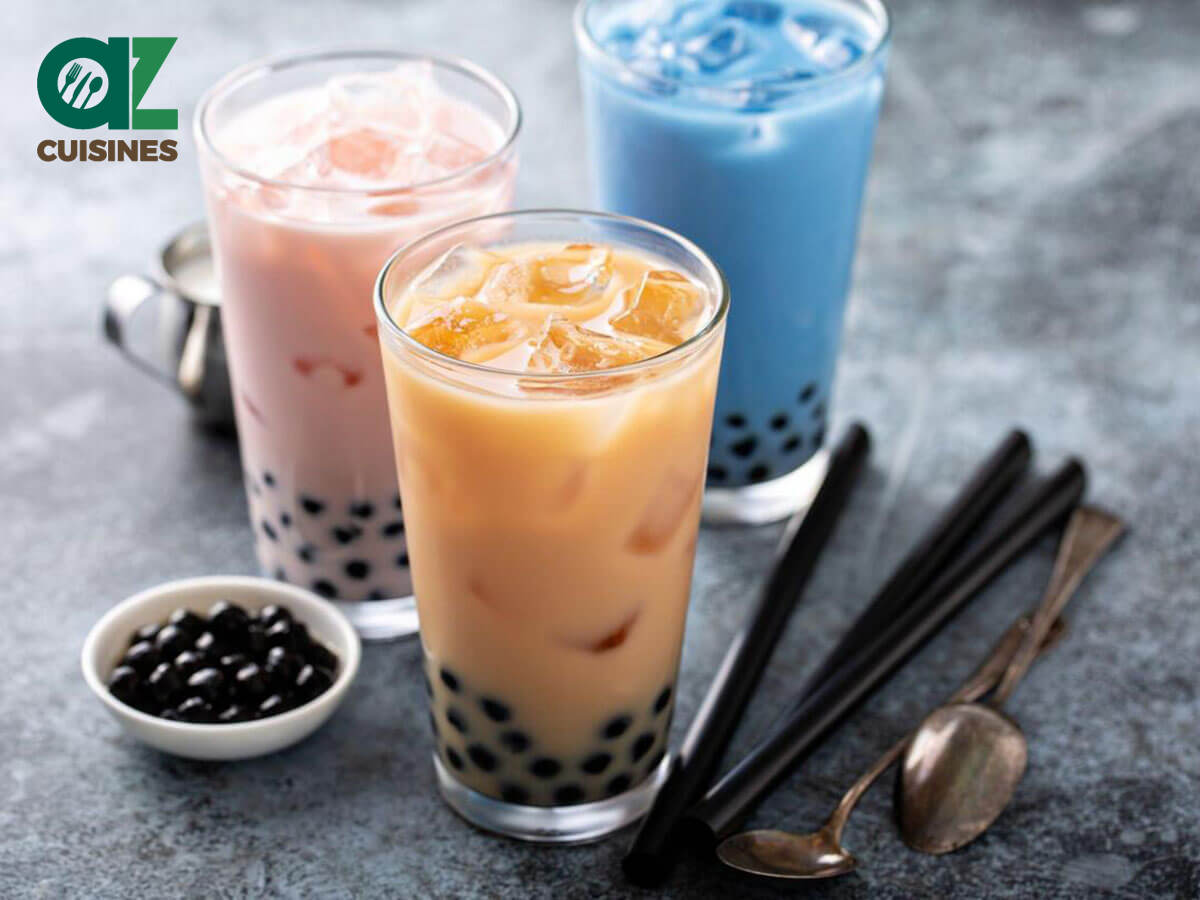


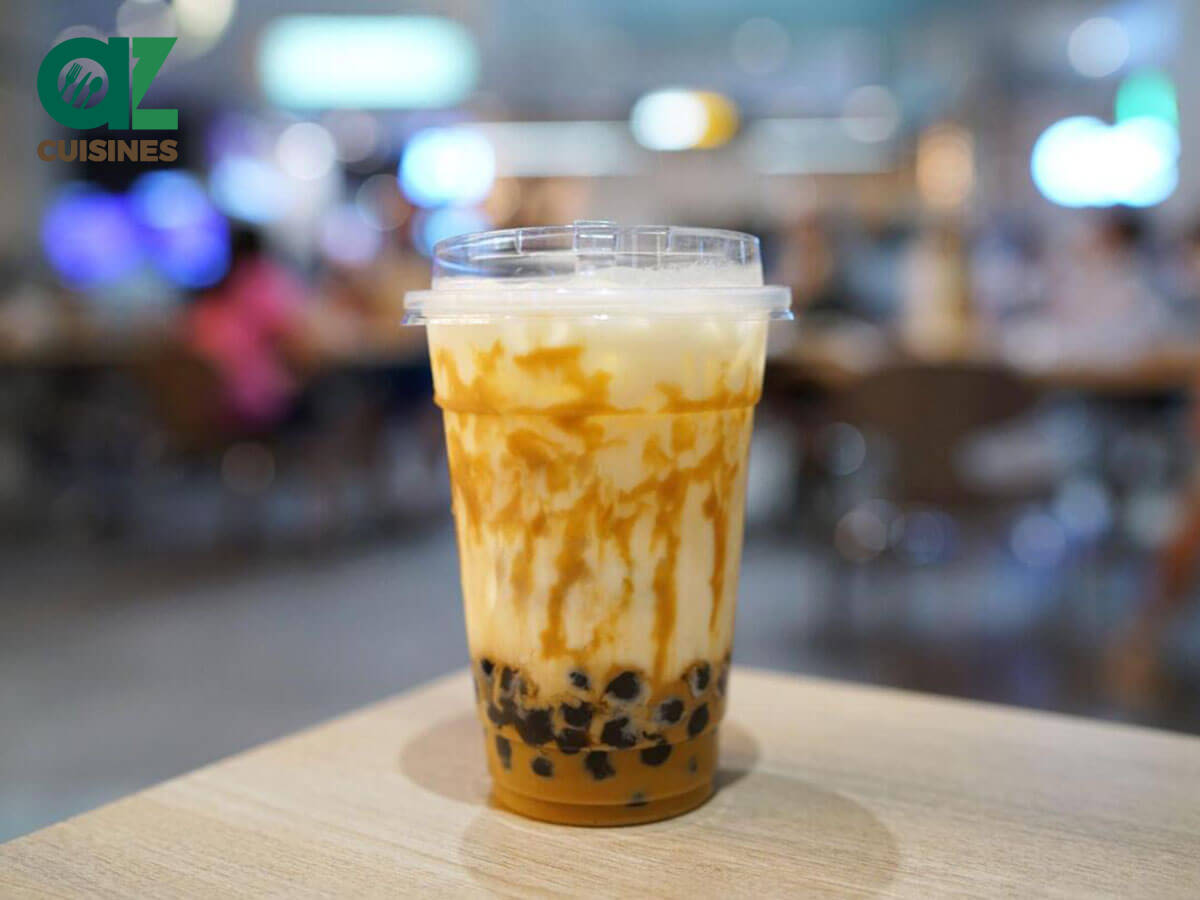
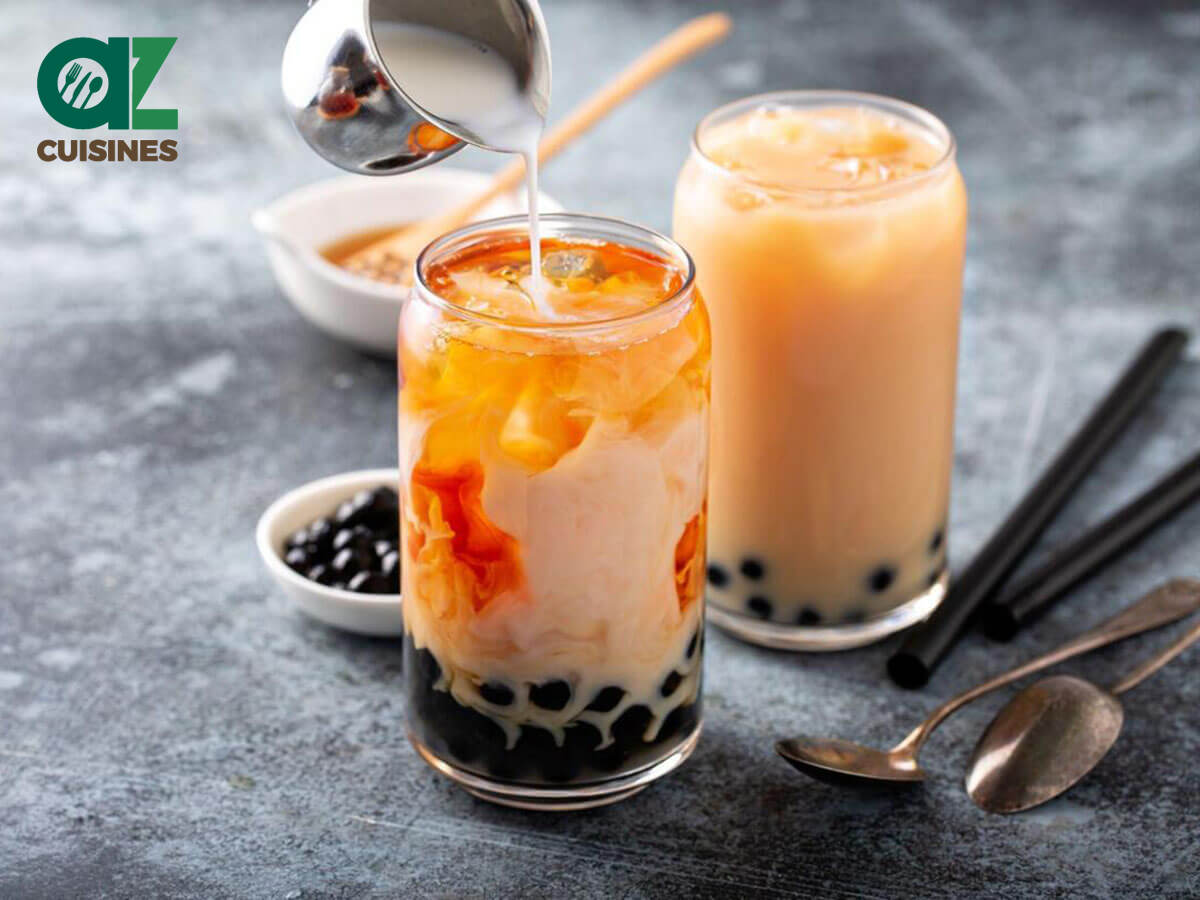
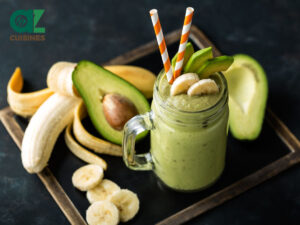
Adam Sam
Senior Food and Drink Editor
Expertise
Food Writer & Recipe Developer, Recipe Tester, Bartender, Cooking-video Maker, Editor In Chief
Education
Adam Sam, an experienced food writer and recipe developer, is passionate about blending diverse culinary traditions, national dishes, and innovative beverages, showcasing his proficiency in both traditional and modern recipe testing.
As the Editor-in-Chief, he elevates culinary content from street food to fine dining, focusing on Western cuisine and types of drinks at azcuisines.com, and is professional in creating engaging cooking videos that simplify complex dishes and ingredients.
His passion for food is evident in his writing, where he uniquely merges various cultures, traditions, and contemporary trends, skillfully combining classic recipes with modern cooking methods.